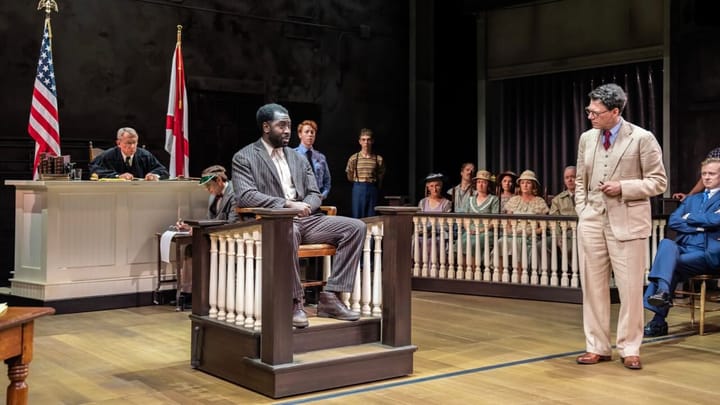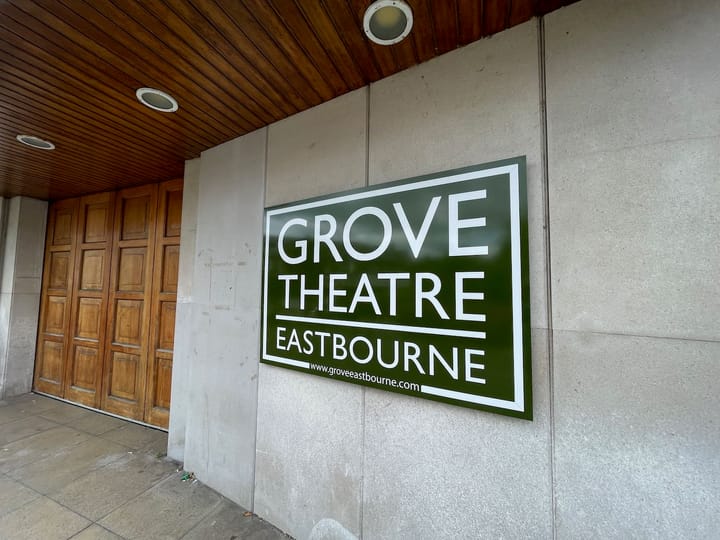REVIEW: Sherlock Holmes - The Hunt for Moriarty
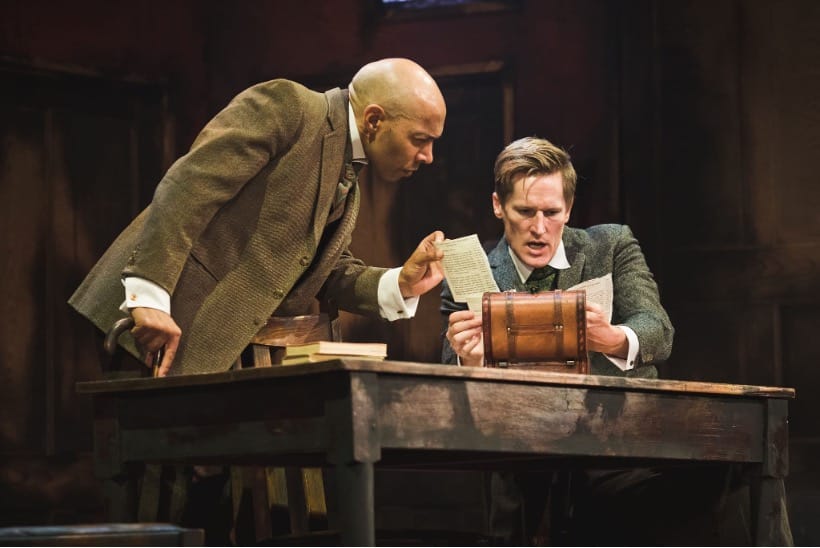
By Paul Bromley, volunteer theatre reviewer
The first thing that strikes you as you take your seat in the Devonshire Park Theatre is the set.
Anyone expecting to see the fully furnished 221B Baker Street flat of Sherlock Holmes will be in for a shock. Instead, set designer Victoria Spearing offers a fire-damaged room with sparse contents. There are a couple of staircases and several doors, a table and chairs but not much more.
This seems like a mystery in itself but as the play opens, it is the more familiar sight of Dr John Watson (Ben Owora) acting as our narrator and guide who helps to explain that it is indeed the famous Holmes flat.
This leads into the recounting of events leading up the fire which form the bulk of the rest of the play as Holmes (Mark Knightley) battles against his rival Professor Moriarty (Gavin Molloy).
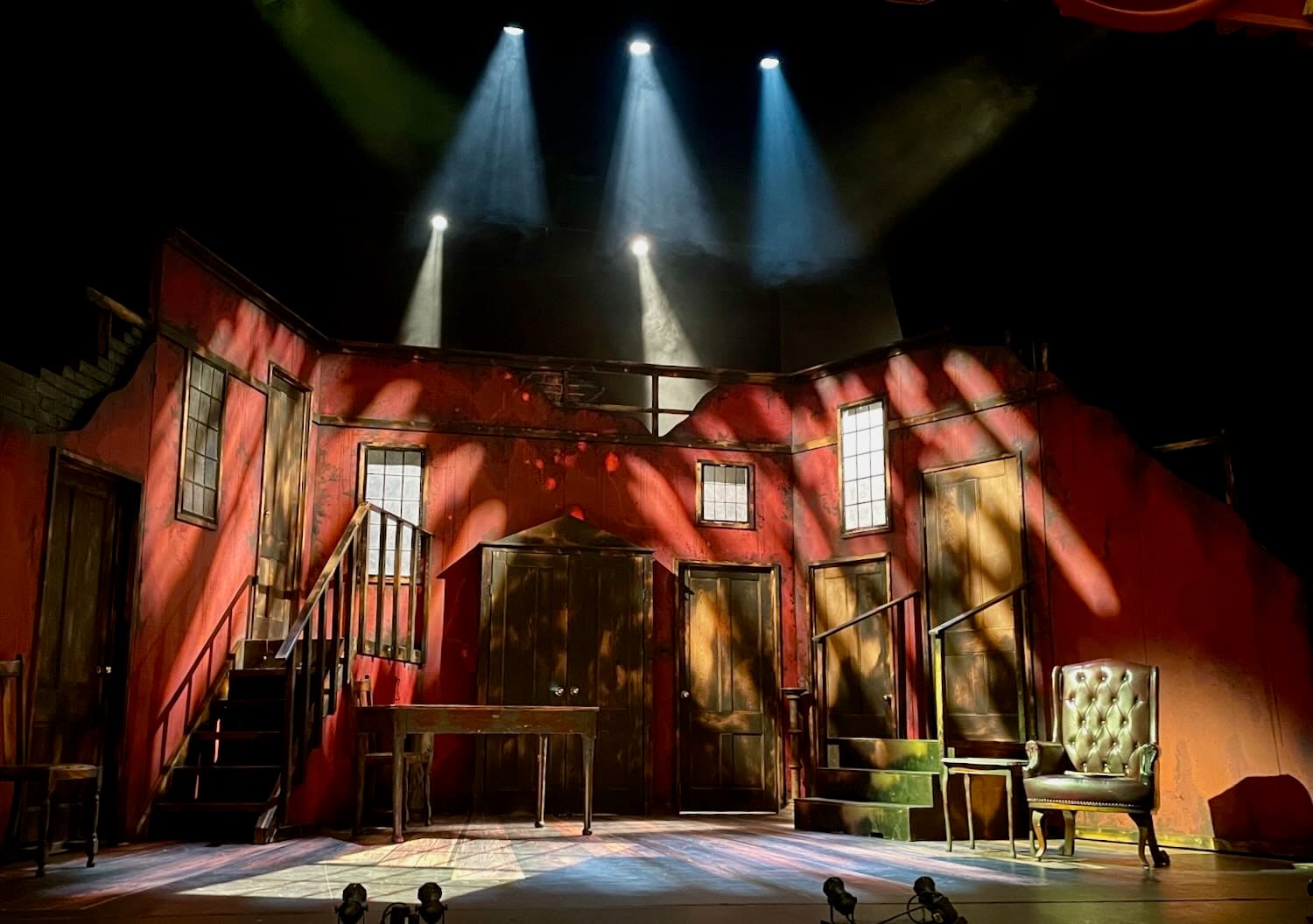
Writer and director Nick Lane has produced his own story based on several of Arthur Conan Doyle’s works, including some of the full-length mysteries.
There are missing secret Government papers found on a dead man on the railway tracks, coded messages left in newspaper advertisements, a strange theatre company and lots of people who aren’t as they seem on the surface.
It is set in 1901 with references to the Boer War, the threat of war in Europe and Queen Victoria coming to the end of her reign. The writer has chosen to link the stories using the theme of risk to Empire with contemporary relevance to the gap between what we are told is true and the actual truth.
This makes the play much more of an intellectual challenge than a straightforward menacing mystery. With the excellent cast playing multiple roles within the series of smaller storylines, it was hard at times to remember who was who beyond the core characters. Apart from Holmes and Watson, the other four cast members take on as many as five different parts within the 2 hour 40 minute production (including interval).
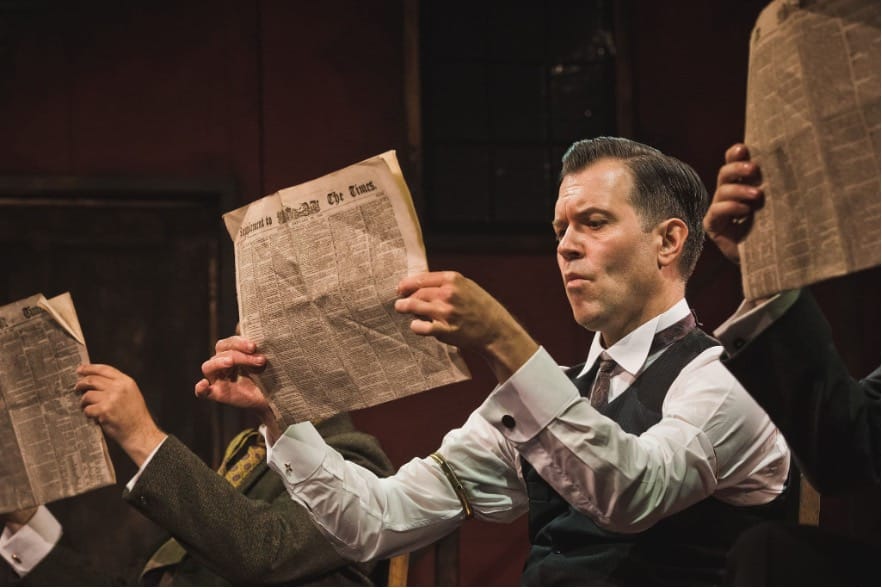
Holmes spends as much time explaining his theories and deductions as he does on his adventures, with long passages spoken in front of Watson and an excellent Pippa Caddick as landlady Mrs Hudson.
After one section of Holmes setting out in detail what he thinks Moriarty is up to, Mrs Hudson exclaims: “I don’t follow.”
“Neither do I,” chimes in Watson.
“You’re not the only ones!” I was tempted to shout out.
At that point, I decided not to spend any more time trying to follow the intricate plotting and relax into enjoying the production on a wider level.
And there are some excellent aspects to this novel way of portraying the fictional detective.
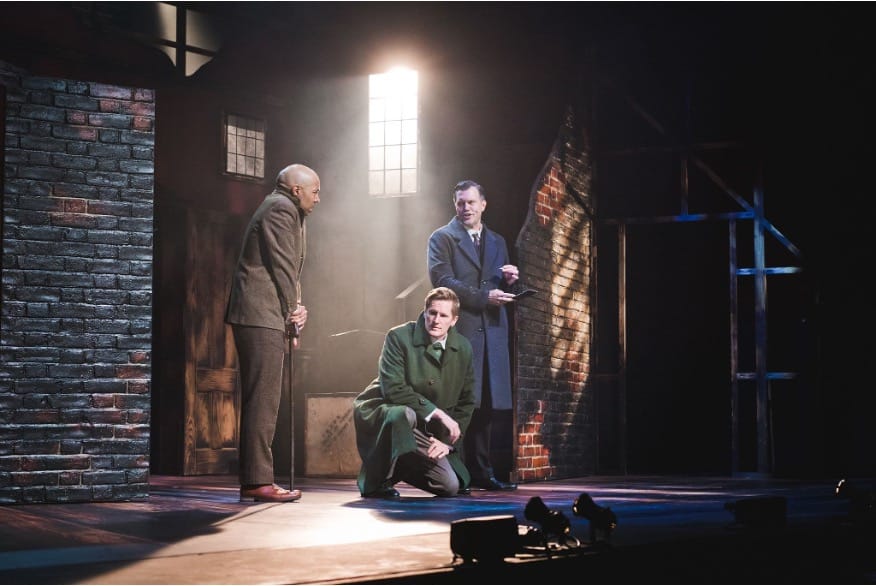
The set is as versatile as the cast. With minimal rearrangement, it becomes an underground station with the sound of passing trains or the basement of a theatre complete with a wardrobe store of props or a dark alley with shadowy figures.
Words or messages are projected onto the back of the set to both aid the narrative and create the sense of travel from one location to the next.
I particularly enjoyed the wonderful rocking from side to side as Holmes and Watson travelled across the continent by train to Switzerland for the cliff-ledge confrontation with Moriarty at Reichenbach Falls. The strobe lighting for the fight scene was a lovely theatrical way to dramatise the final showdown – there are warnings in the foyer about the strobe effects and haze in the production.
The story development of Mrs Hudson was also a highlight. She is not just the landlady to be summoned by taps of Dr Watson’s walking stick on the floor but a fully fledged part of the crime-solving team. The play is not just Holmes and Watson but Holmes, Watson and Hudson.
And there is love interest for Mrs Hudson too as she researches the newspaper library of The Times newspaper to help Holmes.
She also has the only funny lines in the play, which bring a touch of humour to what is otherwise a relentless mystery-cum-chase.
When reference is made to the various soubriquets Holmes uses (‘The Professor’ for Moriarty, ‘The Woman’ for Irene Adler), Mrs Hudson asks: “Sue who?”.
Later, when reference is made to a clue in French being “sous l’armoire [under the wardrobe]”, she asks exasperatedly: “Who’s this Sue now?”
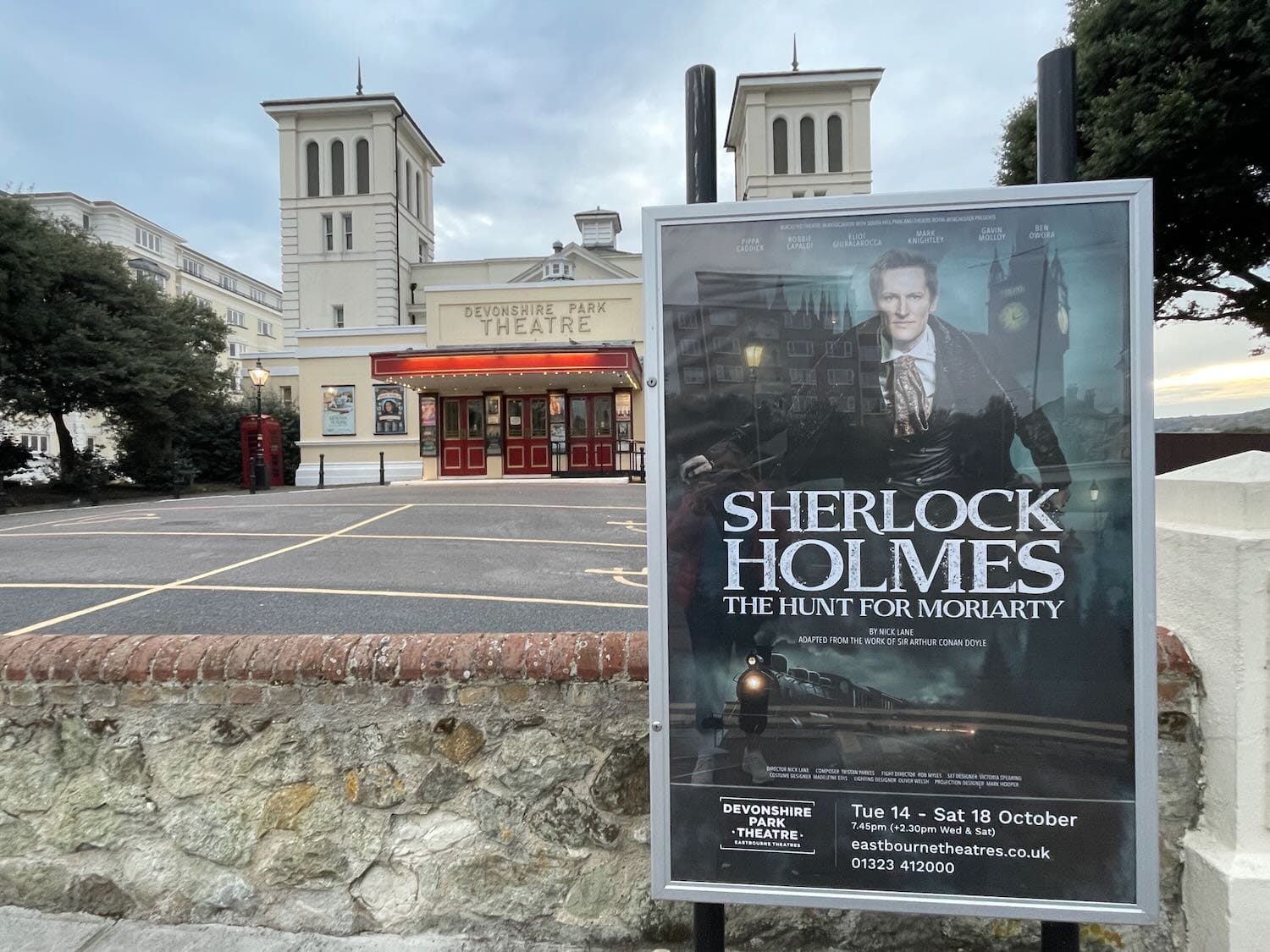
The other scene which made me laugh was set in the gentleman’s club, The Diogenes Club, as Sherlock’s brother Mycroft (Eliot Giuralarocca) and others try to read their papers in silence while the storyline is explained to the audience.
The story comes full circle with Watson and Mrs Hudson back in the fire-damaged apartment, by which time the fire has been explained as the work of Moriarty.
There’s one final plot twist to provide a surprise ending and give the audience a further talking point on the way home.
:: Sherlock Holmes - The Hunt for Moriarty runs at the Devonshire Park Theatre until Saturday, 18 October. Tickets available here.
:: Paul Bromley is a qualified journalist and broadcaster who worked for 40 years for regional newspapers, the Press Association and Sky News. He now works in community rail. He is a volunteer writer with Eastbourne Reporter.
